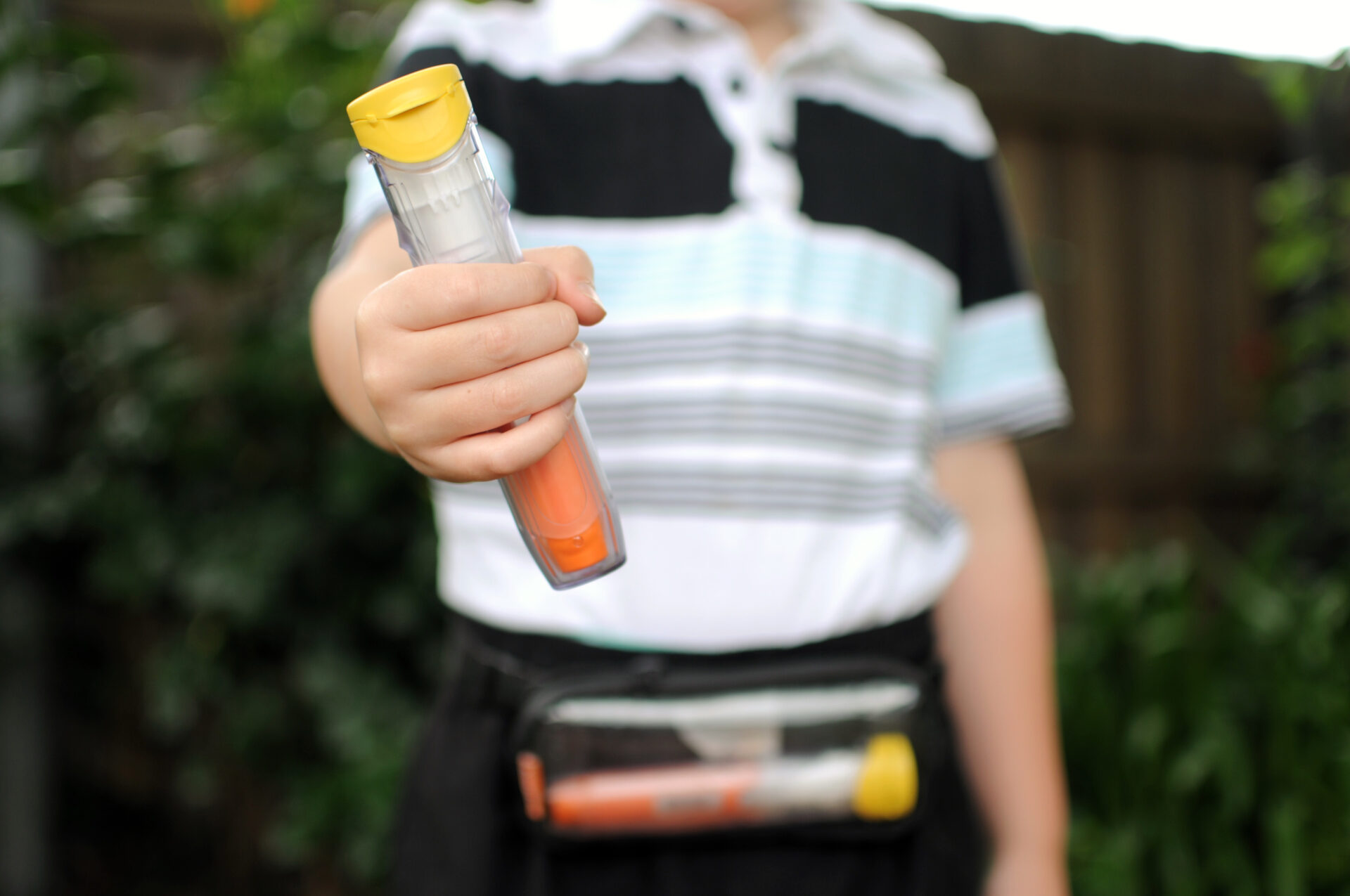You are out at a restaurant and just enjoyed a fantastic pasta dish – delicious sauce, wonderful noodles and a hint of something nutty. Maybe peanut? But wait…you’re allergic to peanuts! As the allergen invades your body, you begin to feel a wave of food allergy symptoms. Your lips start to puff. Your tongue begins to swell. It’s becoming difficult to breathe. Fortunately, you have your trusty epinephrine pen on hand! Relief is on the way.
What is epinephrine?
In its purest sense, epinephrine (or adrenaline) is a hormone within the body released by your adrenal glands that activates your fight-or-flight response in moments of acute stress. It gives your body the boost it needs to combat a situation biologically deemed as dangerous.
Epinephrine auto-injectors are life-saving tools that introduce this hormone directly into the bloodstream to combat the effects of severe allergic reactions known as anaphylaxis. EpiPen medication affects the entire body to halt the spread of severe allergic responses. This tool is made by many brands, including EpiPen, Auvi-Q and more, as well as generic options that can all be prescribed to you by your board-certified allergist.
When should I use my epinephrine?
Anaphylaxis can develop quickly, so early action is often life-saving at the first sign of distress. Symptoms of a severe allergic reaction may include some or all of the following:
- Shortness of breath and wheezing
- Weakness or dizziness
- Trouble breathing or swallowing
- Swelling of the lips or tongue
- Hives or skin irritation
Epinephrine autoinjectors combat these symptoms by helping the heart to pump faster and stronger so oxygenated blood can be distributed to all critical organs in the body. It also relaxes and opens your airways should they become obstructed. While EpiPens are a solution to anaphylactic symptoms, it is still important that you seek immediate medical attention following injection.
How do I use an epinephrine auto-injector?
Although using your epinephrine auto-injector is quick and relatively straightforward, it is not as simple as just giving yourself a shot in the arm or leg. Knowing how to correctly and safely use an epinephrine auto-injector is essential in administering this life-saving medication.
Several brands of epinephrine shots exist on the market, but EpiPen is the most commonly used. Each individual auto-injector contains one single dose of medication. However, they are dispensed in packs of two in the event a second injection of epinephrine is needed before emergency medical services have arrived. Follow these easy steps to safely inject your EpiPen dose:
- Remove the EpiPen from its clear tube container.
- Hold the auto-injector in your fist with the orange tip facing downward.
- Remove the blue safety release by pulling straight up with your free hand.
- Align the orange tip above the middle of the outer thigh.
- Bring the shot down quickly to inject. The needle housed within the orange tip should enter your skin.
- Hold firmly for three seconds.
- Remove the pen and massage the injection site for about 10 seconds.
- Seek medical attention.*
*Patients should always follow the advice and instruction of their board-certified allergists, as adhering to those instructions is critical to the successful use of epinephrine.
Board-Certified Allergists Who Stand By You
If you or a loved one are living with untreated allergies, Charleston Allergy and Asthma is ready to help you find comfort and control. Contact us today to schedule an appointment with our team of board-certified allergists.




